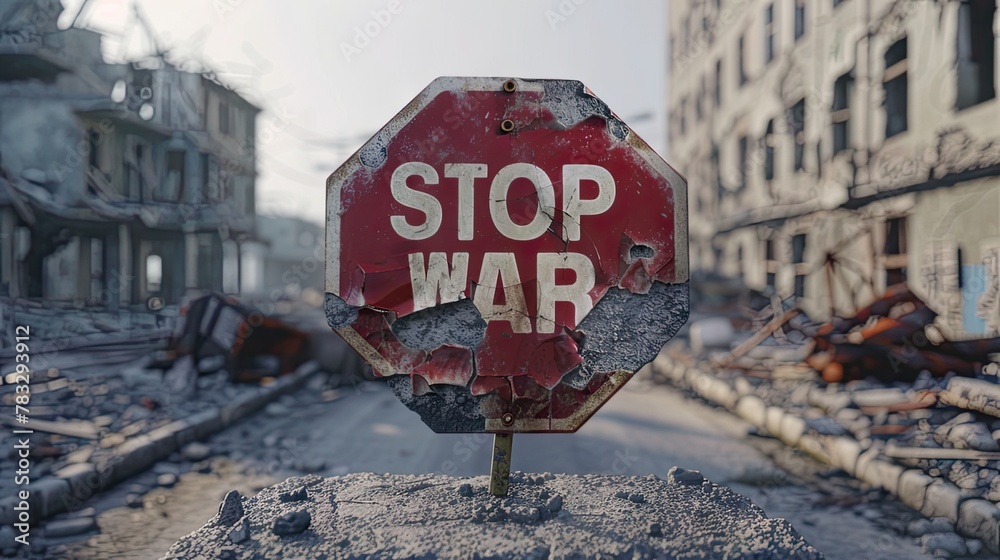I Ate Like People Did During the Great Depression. Here’s What I Learned
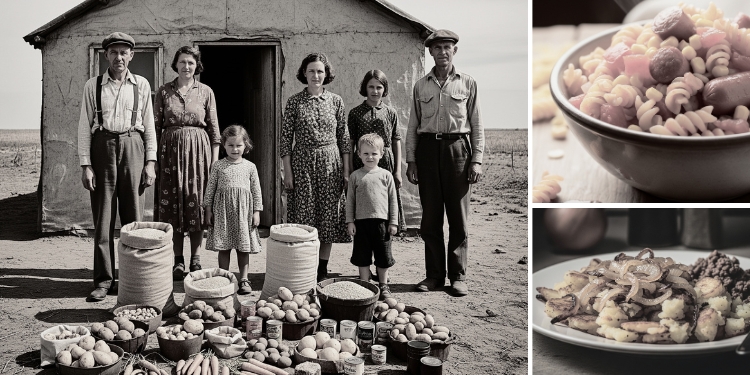
If there’s one thing history teaches us, it’s this: the people who lived through the Great Depression were survivors. When everything fell apart, they didn’t complain. They adapted – and they did it with next to nothing. That’s why I decided to go back in time in the most practical way I could think of: by eating only Great Depression food for a full week.
I wanted to see what lessons we might rediscover from one of the toughest times in American history. And let me tell you – it was an eye-opener. This wasn’t just about food; it was about mindset, grit, and a level of resourcefulness that most of us have forgotten. It also felt like a warning for what might be just around the corner.
The Rules of the Experiment: Surviving on Great Depression Food
The rules were simple but strict: I could only eat foods that were commonly available during the Great Depression. No fancy imports pre-packaged snacks, or modern conveniences. Just basic, inexpensive, and often bland meals that were meant to stretch over days.
Think beans, potatoes, bread, home-canned goods, and whatever cheap vegetables I could find. Everything had to be made from scratch – often using ingredients most of us would throw away without a second thought.
No supermarkets. No microwaves. Just the bare essentials and the know-how our grandparents had back in the 1930s.
What My “Great Depression Food” Diet Looked Like
Here’s a typical day:
• Breakfast: Usually just a slice of toast with bacon grease or lard. Sometimes oatmeal, without sugar or milk.
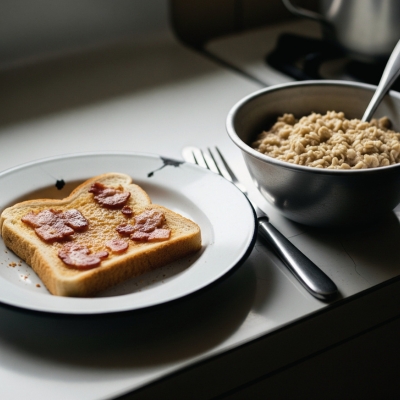
• Lunch: A bowl of “Hoover Stew”, a cheap mix of pasta, canned tomatoes, corn, and hot dogs. Filling, but far from flavorful.
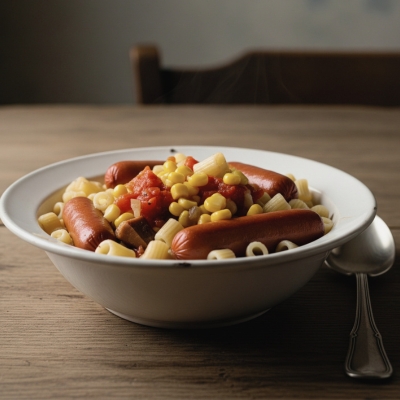
• Dinner: “Poor Man’s Meal” – fried potatoes with onions and, when I could afford it, a small amount of ground beef.

Other days I tried classic Great Depression recipes like peanut butter bread (no eggs or yeast), “mock apple pie” made with crackers instead of apples, and even “water pie” – a strange dessert made from water, sugar, and a little flour in a pie crust.
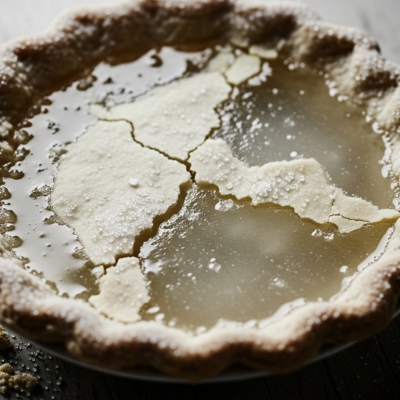
The meals were repetitive and often tasteless. But they kept me alive. And more importantly: they taught me a lot.
1. Waste Nothing: How They Stretched Every Ingredient in Great Depression Food
One of the first and most powerful lessons from Great Depression food is this: nothing goes to waste. I saved potato peels and turned them into chips. I kept bones to make broth. Bacon grease became the base for gravy.
This wasn’t a trend or some sustainability fad – it was survival. It was how they lived. That mindset – treating every scrap like gold – is something we’ve almost entirely lost today.
In a crisis, it’s not about what you want. It’s about making the most of what you’ve got.
2. The Pantry Mindset: Stockpiling as a Survival Strategy
Back then, people couldn’t just run to the store whenever they needed something. They relied on what they had: jars of home-canned food, bags of flour, sugar, salt, and whatever they could grow or trade.
This idea of keeping a well-stocked pantry isn’t old-fashioned – it’s essential. If supply chains break down again, or if inflation makes food unaffordable, it’s the people with full pantries who will eat. The rest? They’ll panic.
Great Depression food wasn’t just about simplicity – it was about strategy and preparation. You should keep this in mind as well – however, as you’ll soon discover, building an efficient stockpile is a complicated task without solid informational resources to guide you.

3. Get Comfortable With Hunger
This might be the hardest truth: I was hungry more often than not. Meals were small. There were no snacks, no desserts, and no “treats.” Food wasn’t entertainment. It was fuel. Just enough to get through the day.
People back then weren’t constantly starving, but they lived with hunger in a way we can hardly imagine. Today we eat out of boredom. In the 1930s, people ate to stay alive. If we ever face a serious economic collapse, we’ll have to get used to being a little hungry – and learn how to function through it.
4. Cooking Skills Are No Longer Optional
This week showed me how dependent we are on convenience food. Most people today have no idea how to bake bread, make soup from bones, or create meals out of scraps.
But in a crisis, cooking skills become survival skills.
Great Depression recipes like “mock apple pie” or peanut butter bread are built on creativity and substitution. Knowing how to cook – really cook – means you can make something from almost nothing. That’s not just practical. It’s life-saving.

The Mental Battle of Eating Great Depression Food
Eating the same bland meals day after day wore me down mentally. It made me grateful for the variety and flavor we enjoy today, but it also showed me how mentally tough people had to be back then.
Surviving the Great Depression wasn’t just about food. It was about mindset. About enduring without giving up. That mental resilience is rare today. We’ve grown soft, addicted to comfort and convenience. If hard times return, most of us aren’t prepared mentally or physically.
Are We Ready for What’s Coming?
This experiment made one thing brutally clear: we’re not ready. We’ve lost the ability to live simply. We waste food, time, and resources like they’re infinite. But the economy is fragile. Food systems are vulnerable. And history shows that collapse can come quickly.
When that happens, do you know how to make a meal from a can of beans and some stale bread? Can you survive on potatoes for a week? Do you have enough food at home to last a month? Could you feed your family without a trip to the store? The Great Depression generation left us a blueprint. It’s right there in the recipes, the habits, and the mindset. But most of us are ignoring it.
There’s Something You Can Do
The situation is far more critical than it seems. On paper, everything looks simple enough. You’re probably confident that you’re ready to survive on Great Depression Food. But are you really? Are you prepared to face the lack of variety? To manage with very little and not lose your mind from the repetition of the same routine, day after day. Chances are, you’re not. Even if you believe otherwise. That’s why the solutions need to be clear and grounded:
• Make sure that when the crisis hits, you’ll have enough supplies to get through an extended period.
• Learn how to stretch what little you have. And then stretch it even more.
Build Your Stockpile the Smart Way
If you go with the first approach, then you need to master what I like to call the art of stockpiling. This is a vast subject—and opinions are everywhere—but the smartest approach, by far, is one focused on efficiency.
 In his book A Navy SEAL’s Bug-In Guide, Joel Lambert lays out a simple yet highly effective plan to build a survival stockpile that doesn’t rely on refrigeration. Here’s what his plan includes:
In his book A Navy SEAL’s Bug-In Guide, Joel Lambert lays out a simple yet highly effective plan to build a survival stockpile that doesn’t rely on refrigeration. Here’s what his plan includes:
• A list of foods for a 3-month stockpile
• Enough food to cover three meals a day: breakfast, lunch, and dinner
• A 6-month extended list with proper quantities
• A full 12-month long-term stockpiling plan
Beyond just food lists, this section of the book also shares specific sources where you can buy these long-lasting foods at highly accessible prices. And no – it’s not your usual supermarket or any place you’d expect. This book will also teach you a lot about how to build the right mindset for any crisis.
Maximize What You Have
If the crisis has already hit – or if you’re currently going through a financially difficult time – it’s essential to know how to make the most of what you’ve got. In other words, make do with what’s available. In these cases, focus on recipes that use simple, affordable ingredients you’re likely to already have in your pantry.
 But there’s a potentially fatal problem when SHTF: there will be no Google, YouTube., or Chat GPT. No online recipe blogs either. Nothing. The digital world will go dark.
But there’s a potentially fatal problem when SHTF: there will be no Google, YouTube., or Chat GPT. No online recipe blogs either. Nothing. The digital world will go dark.
There will, however, still be one type of resource – one our ancestors relied on, one that never failed: books. Here are two books worth having in your survival library – resources that could literally save your life when you’re trying to make something out of almost nothing:
• The Lost Ways 2 – Written by none other than Claude Davis, includes three powerful survival recipes, including the well-known Lost Samurai Superfood – a staple that can get you through the worst of times.
• The Lost Superfoods – This is more than just a recipe book. With over 126 forgotten survival foods and practical storage hacks, it’s an essential addition to any serious stockpile. Each recipe is explained step by step, complete with clear illustrations, so you won’t be guessing when it matters most.
Final Thoughts: Time to Learn From the Past
Think about what you’ve eaten today. How much of it was packaged, processed, or thrown together in minutes? Think about how much of it you wasted. Then ask yourself: could you survive on Great Depression food if you had to?
Maybe it’s time we all took a step back, away from luxury and into practicality. The goal isn’t to live in fear but to be prepared. Because if history has taught us anything, it’s this:
Hard times don’t send a warning. They just arrive. And those who make it through aren’t the ones with the most money. They’re the ones who know how to adapt. The ones who can turn scraps into meals and fear into determination.
You may also like: 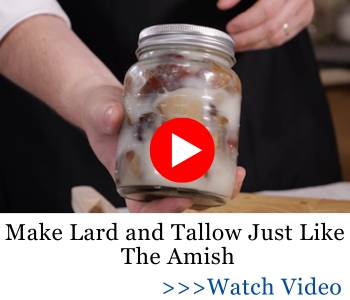
Great Depression vs Silent Depression
This Backpack-Sized Water Generator Can Produce Up to 40 Gallons of Water Per Day (Video)
5 Mistakes People Made Before the Great Depression
Foods You’ve Been Storing Wrong Your Whole Life
Read the full article here








